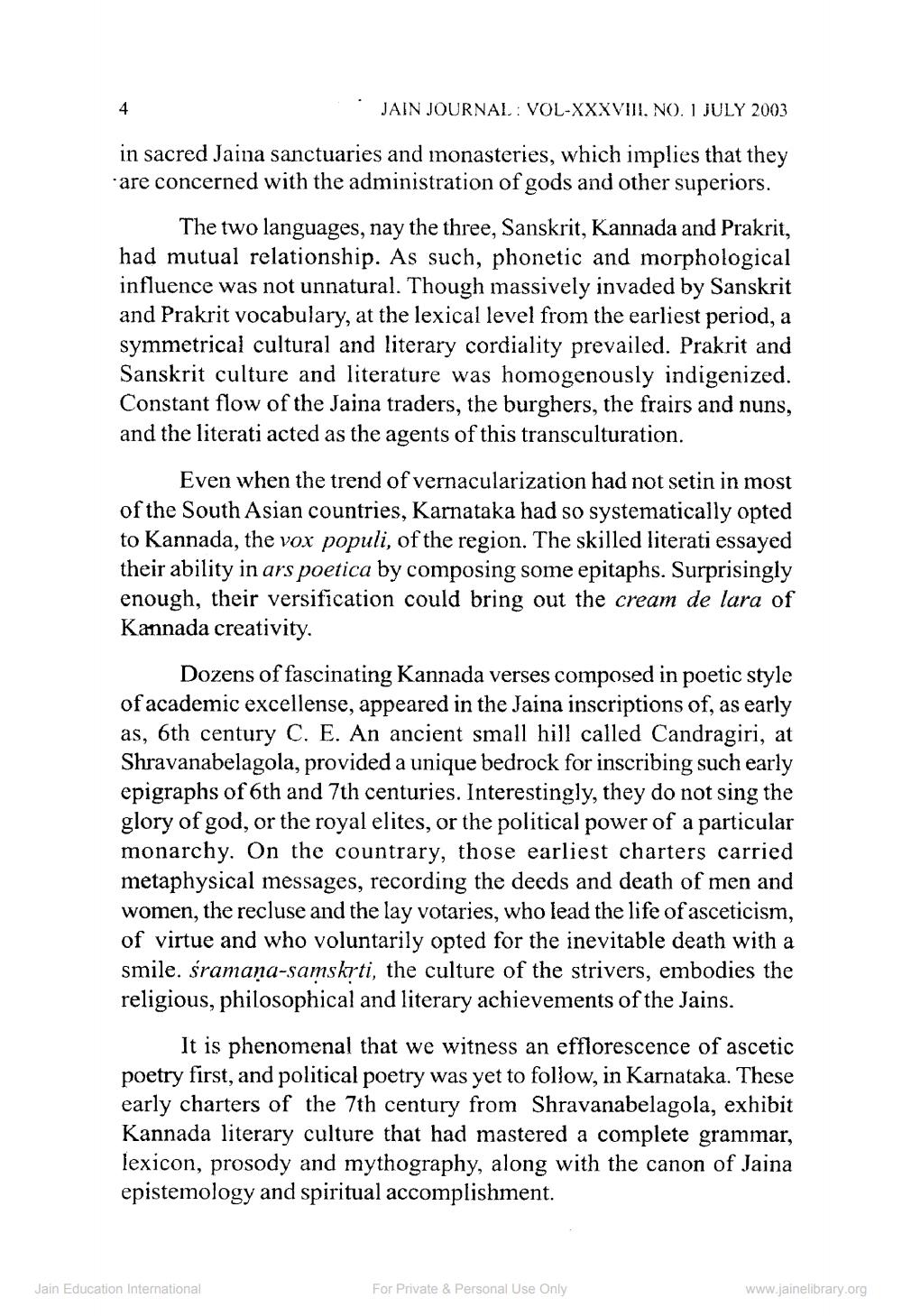________________
JAIN JOURNAL: VOL-XXXVIII, NO. 1 JULY 2003
in sacred Jaina sanctuaries and monasteries, which implies that they are concerned with the administration of gods and other superiors.
The two languages, nay the three, Sanskrit, Kannada and Prakrit, had mutual relationship. As such, phonetic and morphological influence was not unnatural. Though massively invaded by Sanskrit and Prakrit vocabulary, at the lexical level from the earliest period, a symmetrical cultural and literary cordiality prevailed. Prakrit and Sanskrit culture and literature was homogenously indigenized. Constant flow of the Jaina traders, the burghers, the frairs and nuns, and the literati acted as the agents of this transculturation.
Even when the trend of vernacularization had not setin in most of the South Asian countries, Karnataka had so systematically opted to Kannada, the vox populi, of the region. The skilled literati essayed their ability in ars poetica by composing some epitaphs. Surprisingly enough, their versification could bring out the cream de lara of Kannada creativity.
Dozens of fascinating Kannada verses composed in poetic style of academic excellense, appeared in the Jaina inscriptions of, as early as, 6th century C. E. An ancient small hill called Candragiri, at Shravanabelagola, provided a unique bedrock for inscribing such early epigraphs of 6th and 7th centuries. Interestingly, they do not sing the glory of god, or the royal elites, or the political power of a particular monarchy. On the countrary, those earliest charters carried metaphysical messages, recording the deeds and death of men and women, the recluse and the lay votaries, who lead the life of asceticism, of virtue and who voluntarily opted for the inevitable death with a smile. śramaņa-samskrti, the culture of the strivers, embodies the religious, philosophical and literary achievements of the Jains.
It is phenomenal that we witness an efflorescence of ascetic poetry first, and political poetry was yet to follow, in Karnataka. These early charters of the 7th century from Shravanabelagola, exhibit Kannada literary culture that had mastered a complete grammar, lexicon, prosody and mythography, along with the canon of Jaina epistemology and spiritual accomplishment.
Jain Education International
For Private & Personal Use Only
www.jainelibrary.org




